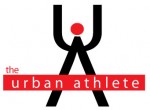Audience: Patients
Purpose: To highlight the poor link between the bogeymen found on imaging with pain or dysfunction.
Our current technology is amazing when it comes to viewing the insides of our body. The problem with this fantastic technology is that we can see something (e.g. a tear in a muscle or a joint with some osteoarthritis) and assume that there is something wrong or that this is the source of our pain. However, the link between tissue “abnormalities” on MRI, x-ray or Ultrasound is often quite poor. Many, if not most, people have “bad stuff” on their MRIs or x-rays yet have no pain.
A quick anecdote…I was with a patient that had horrible left shoulder pain. Poor movement and worse strength. His doctor ordered an MRI and my patient reported to me that sure enough the shoulder was a mess. Torn rotator cuff, bursal thickening, arthritis in many joints, some fluid collecting - an absolute disaster. BUT, there was a problem. He wanted to know if the MRI picture could have been “flipped” or “mirrored” because these results were for his Right, painfree shoulder. The results weren’t flipped or mirrored, we got the results for the left later. They were just as “bad”. Point being, structure is not destiny. Damage or scary stuff on any imaging report does not equal pain. This patient ended up pain free in a couple months. His MRI report would not have changed despite the changes in his strength, mobility and pain.
This is not new
I am not breaking any news here. We have known this for at least 15 years. Joint degeneration, disc bulges (even herniations), rotator cuff tears, calcifications in ligaments or joints are all normal variations that can exist without pain. At certain ages this changes, assumed to be abnormal, are actually normal and more common than a lack of these changes.
Below is a sampling of research highlighting the limitations of structural anomalies and pain. I was going to provide some insight but instead I will use this post as a catalogue of the research that looks at the relationship between tissue damage/abnormalities and pain.
Bottom Line: Pain is poorly correlated with damage.
One caveat: I hesitate to say this but sometimes these structural changes can be related to pain… it is just not a guarantee or some harbinger of pain doom. What I want to emphasize is that it is just not as cut and dry as many make it seem. There are many factors that lead to pain but we tend to blame the simplest one (e.g. joint damage) when we actually know better but persist in this fallacy.
Some other links on this topic:
Diane Jacobs: http://humanantigravitysuit.blogspot.ca/2012/04/pain-and-tissue-damage-are-from.html
Bboy Science (Tony Ingram): http://www.bboyscience.com/damage-does-not-cause-pain/
Spine Imaging Abnormalities are really just normalities
Maurer M, Soder RB, Baldisserotto M Spine abnormalities depicted by magnetic resonance imaging in adolescent rowers.Am J Sports Med. 2011 Feb;39(2):392-7. Epub 2010 Oct 2.
Jensen MC, Brant-Zawadzki MN, Obuchowski N, Modic MT, Malkasian D, Ross JS N Engl J Med.Magnetic resonance imaging of the lumbar spine in people without back pain. 1994 Jul 14;331(2):69-73. (abstract here)
Weinreb JC, Wolbarsht LB, Cohen JM, Brown CE, Maravilla KR. Prevalence of lumbosacral intervertebral disk abnormalities on MR images in pregnant and asymptomatic nonpregnant women. Radiology. 1989 Jan;170(1 Pt 1):125-8. Link here
Takada E, Takahashi M, Shimada K.Natural history of lumbar disc hernia with radicular leg pain: Spontaneous MRI changes of the herniated mass and correlation with clinical outcome.J Orthop Surg (Hong Kong). 2001 Jun;9(1):1-7. Abstract here.
Stadnik TW, Lee RR, Coen HL, Neirynck EC, Buisseret TS, Osteaux MJ.Annular tears and disk herniation: prevalence and contrast enhancement on MR images in the absence of low back pain or sciatica. Radiology. 1998 Jan;206(1):49-55.
Matsumoto M, FujimuraY, Suzuki N, Nishi Y, Nakamura M, Yabe Y, Shiga H.MRI of cervical intervertebral discs in asymptomatic subjects.J Bone Joint Surg Br. 1998 Jan;80(1):19-24. Abstract here.
Shoulder abnormalities not related to pain
Connor PM, Banks DM, Tyson AB, Coumas JS, D’Alessandro DF. Magnetic resonance imaging of the asymptomatic shoulder of overhead athletes: a 5-year follow-up study.Am J Sports Med. 2003 Sep-Oct;31(5):724-7. Abstract here.
Miniaci A, Mascia AT, Salonen DC, Becker EJ Magnetic resonance imaging of the shoulder in asymptomatic professional baseball pitchers. .Am J Sports Med. 2002 Jan-Feb;30(1):66-73. Abstract here
Jost B, Zumstein M, Pfirrmann CW, Zanetti M, Gerber C.MRI findings in throwing shoulders: abnormalities in professional handball players.Clin Orthop Relat Res. 2005 May;(434):130-7. Abstract here
KNEES
Shellock FG, Hiller WD, Ainge GR, Brown DW, Dierenfield L.Knees of Ironman triathletes: magnetic resonance imaging assessment of older (>35 years old) competitors. J Magn Reson Imaging. 2003 Jan;17(1):122-30. Abstract here
Beattie KA, Boulos P, Pui M, O’Neill J, Inglis D, Webber CE, Adachi JD. Abnormalities identified in the knees of asymptomatic volunteers using peripheral magnetic resonance imaging.Osteoarthritis Cartilage. 2005 Mar;13(3):181-6. Abstract here
Shellock FG, Deutsch AL, Mink JH, Kerr R Do asymptomatic marathon runners have an increased prevalence of meniscal abnormalities? An MR study of the knee in 23 volunteers.
Zanetti M, Pfirrmann CW, Schmid MR, Romero J, Seifert B, Hodler J. Clinical course of knees with asymptomatic meniscal abnormalities: findings at 2-year follow-up after MR imaging-based diagnosis. Radiology. 2005 Dec;237(3):993-7. Epub 2005 Oct 26.
More to come.




[...] From Arthritis Tips And AnswersModernizing the Hospital Patient ExperienceAnnotated Bibliography #7Structure is not Destiny - please don’t rush to freaking out about your x-ray, MRI or ul… #header { background: [...]